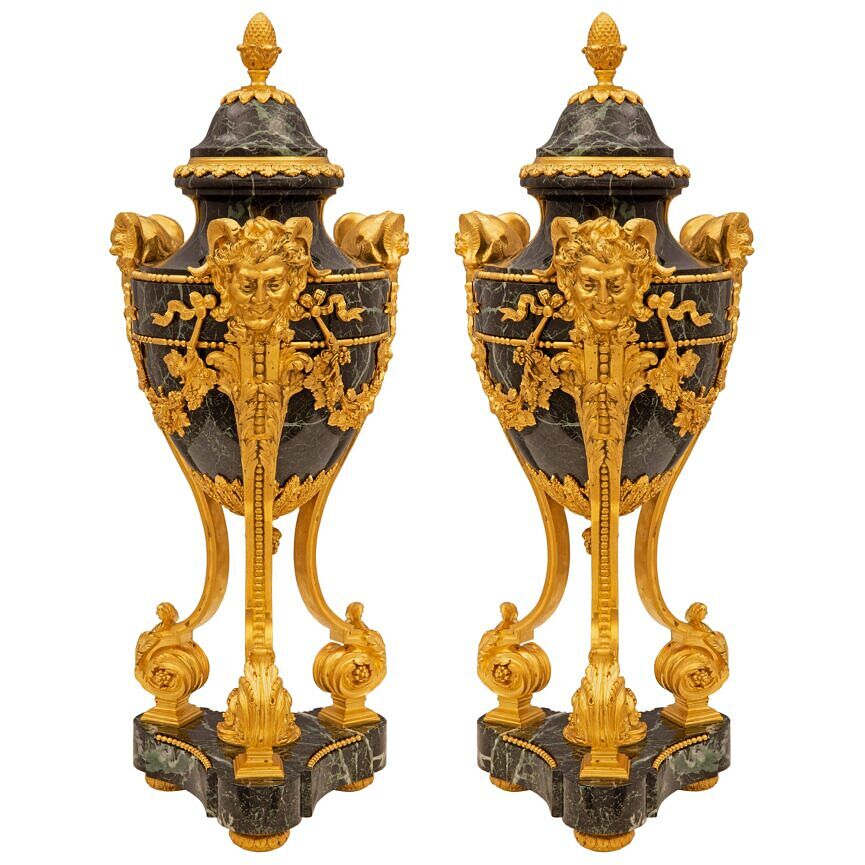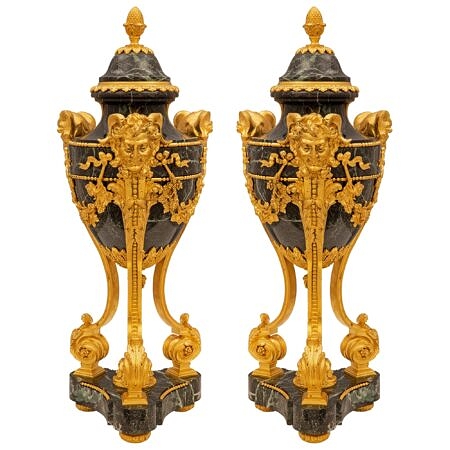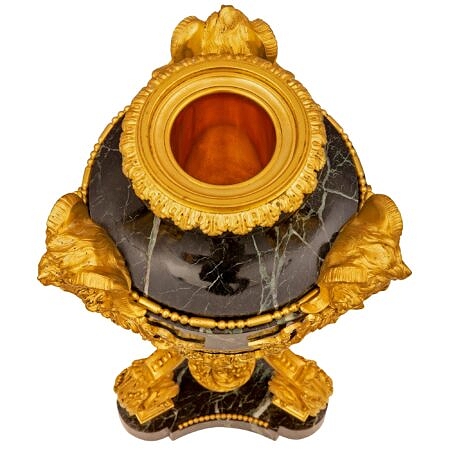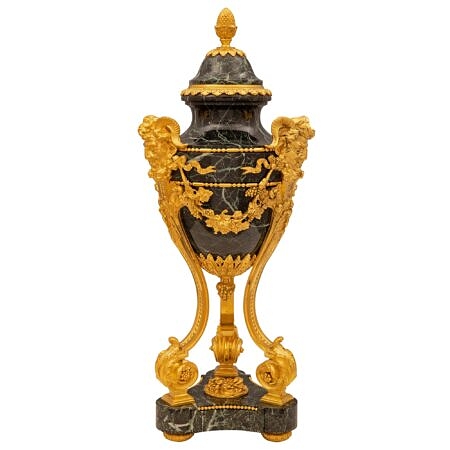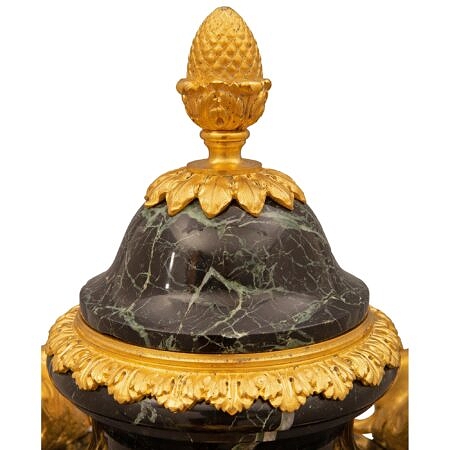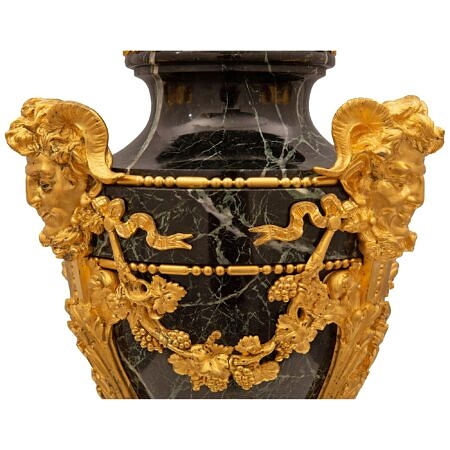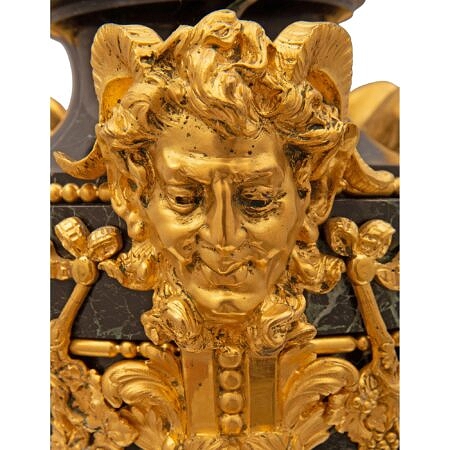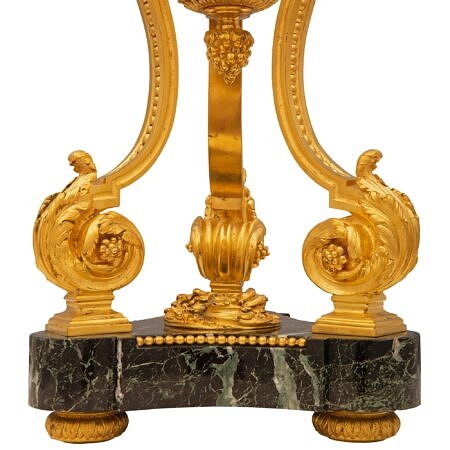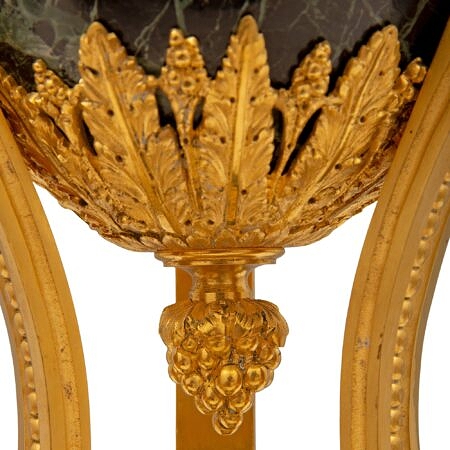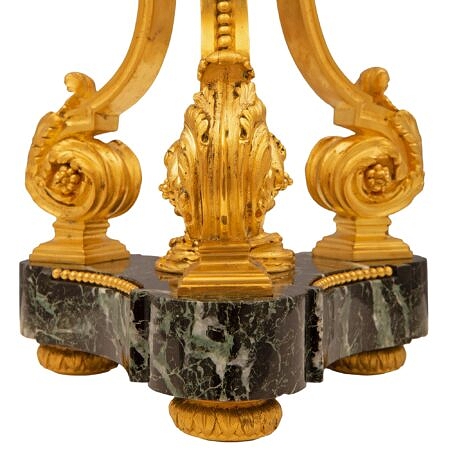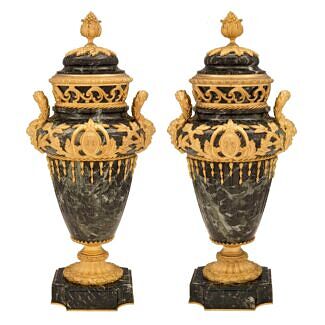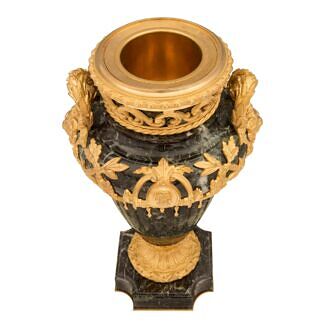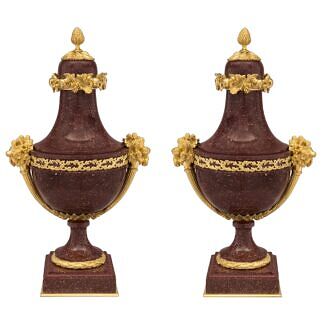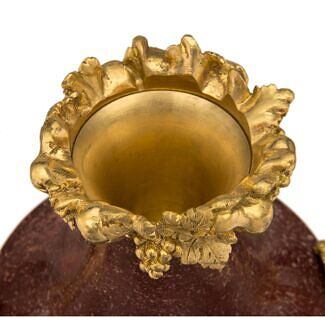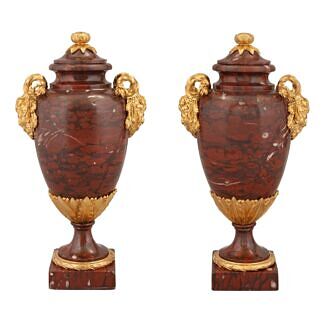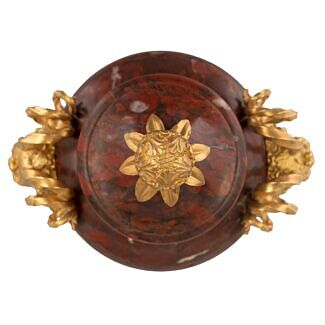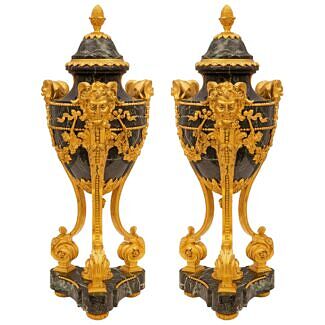A pair of French 19th century Louis XVI st. Belle Époque period ormolu and Vert Maurin marble lidded cassolette urns, stamped Fumiere
An impressive and extremely high quality pair of French 19th century Louis XVI st. Belle Époque period ormolu and Vert Maurin marble lidded cassolette urns, stamped Fumiere. Each large scale urn is raised by three mottled bun feet with a... — Read More
An impressive and extremely high quality pair of French 19th century Louis XVI st. Belle Époque period ormolu and Vert Maurin marble lidded cassolette urns, stamped Fumiere. Each large scale urn is raised by three mottled bun feet with a finely detailed wrap around foliate band. The triangular Vert Maurin marble bases display concave sides, rounded corners and beaded trims. Three elegantly curved supports lead upwards displaying beautiful scrolled acanthus leaves and a fine beaded design leading up to stunning richly chased satyrs with ram horns. The solid Vert Maurin marble urns are carved out of one solid piece of marble and are exquisitely decorated with extremely high quality bottom acorn finials, detailed swaging floral garlands, and ribbon designs. The marble lids are accented with acanthus leaves and acorn finials and open to reveal the stamped underside, with a burnished ormolu interior. All original gilt throughout. — Read Less
- Item # 7464
-
H: 25.25 in L: 10 in D: 10 in
H: 64 cm L: 25 cm D: 25 cm
- France
- 19th Century
- Marble/Stone, Ormolu
-
Belle Époque Read More,
Louis XVI st. Read More
(Belle Époque) -
Gaining its name from the optimistic and peaceful period of time between 1871 and World War I, Belle Epoque means “beautiful period”, and occurred during the era of the Third French Republic. This period of economic, colonial, and scientific prosperity brought with it a flourishing artistic climate with numerous literal, musical, theatrical, and visual masterpieces being created.
The Eiffel Tower, which was constructed between 1887 and 1889, served as the entrance to the World’s Fair held in Paris. That same year, the Moulin Rouge cabaret in Paris was founded and showcased the now more mainstream styles of performance including can-can dancing. Belle Epoque dancers and singers were Paris celebrities and became immortalized by the poster arts of Toulouse-Lautrec.
Leading up to this period in 1865, the American Civil War was coming to a close, with France proposing to construct the Statue of Liberty as a joint effort with the United States. France would be responsible for the statue, with America constructing the pedestal. Created to celebrate the nation’s success in building a viable democracy, the statue would stand as a symbol of friendship between the French and American people.
(Louis XVI st.) -
Also known as Louis Seize, Louis XVI's style is a style of architecture, furniture, decoration, and art created during Louis XVI’s 19-year reign in France, just before the French Revolution.
Thought to be a reaction and juxtaposition to the prior more elaborate styles, Louis XVI style developed at the end of the Baroque Period and continued until the birth of French Neoclassicism.
King Louis XVI showed little enthusiasm for the old world styles of the Baroque Period and he sought out a create a new “beau ideal” that focused on the purity and grandeur of Ancient Romans and Greeks.
Inspired by Ancient Roman architecture and art, distinct features of the Louis XVI style are linear lines, small repeated motifs, floral medallions hanging from ribbons, acanthus leaves, urns, dolphins, ram, and lion heads, and griffins.
Greco-Roman elements, often used in earlier and later French styles, were also quick common and included fluted and twisted columns, Caryathids, and corbels.
- Fumière et Cie Read More
Fumière et Cie was part of Thiébaut Frères, a renowned French bronzier / foundry in the mid 19th century devoted to works of art. This distinguished company worked with famous sculptors and other bronziers like Barbedienne, Belleuse, DuBois, Carpeaux and d’Angers. They took part in many French exhibitions and created many historical monuments in and around Paris, including Saint Michael striking down the dragon (designed by Duret for the Saint-Michel's fountain in Paris) and Napoleon I designed by Dumont for the Vendôme column. Others include: Gloria Victis by Mercié, a statue of Alexandre Dumas Père, a vase called Le Poème de la Vigne (currently in the San Francisco Museum), a statue depicting Charlemagne by Marquet brothers and a reduction of the Statue of Liberty made by Bartholdi which is now on Grenelle's bridge in Paris. In 1898, Rodin signed a contract with this company regarding the casting of two of his works in different sizes: Saint John the Baptist and Triumphant youth.
Payment Plan Option Learn More Choose the payment plan option at checkout and customize this payment option with our team. Payment plans are flexible and items will ship once all payments are received.


